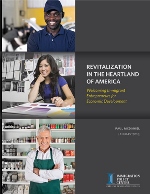Published on Tue, Jan 28, 2014
A recent article in U.S. News and World Report, quoted Mary Giovagnoli, Director of the IPC. The article, titled, "The Republican Party's Impossible Immigration Balancing Act," said:
"When it comes to immigration reform, House Republicans are in an impossible spot: Members are left balancing congressional elections with the GOP's larger 2016 interests, reluctant to hand a Democratic president a victory while hoping to make up ground with the Latino community...
"In order to gain traction with Latino voters, they will have to do more than simply talk about a plan. They will have to enact one, take a comprehensive approach, shed the party's enforcement-only rhetoric and openly consider a path to legalization for the 11 million, an option that many lawmakers have struggled to publicly support. While Republicans nationally need Latino support to win elections, few members from GOP-controlled districts face a high volume of Latino voters back home to put pressure on them. Instead, it's anti-immigration reform activists who pressure sitting members to stay away from anything that resembles legalization for the 11 million.
"The policy solutions to the problem and the political viability of them are potentially miles apart," says Mary Giovagnoli, director of the Immigration Policy Center, a nonpartisan immigration research group."
Published in the U.S. News and World Report




